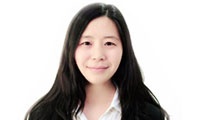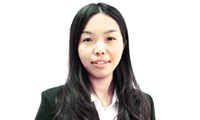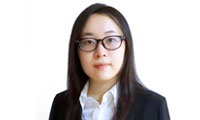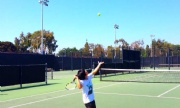下面是天道小编从斯坦福大学官网上给大家整理的关于斯坦福大学电子工程学院历史介绍的信息,希望对申请斯坦福大学EE专业的同学有所帮助。
History of Electrical Engineering
The following short history is based on an essay by Professor Stuart Gillmor, the biographer of Fred Terman, and on conversations with and comments by a variety of historically minded individuals, including Stanford Emeritus Professors Ron Bracewell and John Linville. It also draws on Stuart Leslie's The Cold War and American Science: The Military-Industrial Complex at MIT and Stanford [Columbia University Press, 1993]. The history will be extended and revised as time permits.
Leland StanfordThe history of Electrical Engineering at Stanford University can be traced along technical and professorial lines with its birth in central power station engineering in 1893 with the arrival of the first Professor of Electrical Engineering at Stanford, F.A.C. Perrine, its extension to power transmission with the arrival of H.J. Ryan in 1905, and its significant expansion into electronics and radio communications with the arrival of F.E. Terman in 1925. The rest, as they say, is history. This short narrative expands on the story of the Department of Electrical Engineering in the context of the University and the School of Engineering, from its inception through its first fifty years.
Engineering has always been an important subject at Stanford. In fact, Senator Leland Stanford's first idea for establishing a memorial to his son was to "start a school or institution for civil and mechanical engineers on my grounds at Palo Alto," but the Reverend Augustus F. Beard successfully encouraged him to broaden his concept to include a full university like Cornell. Senator and Mrs. Stanford then visited Cornell, Yale, MIT ("Boston Tech"), and Harvard, where President Eliot suggested that they endow a university, free of tuition costs. Cornell and MIT in particular were to have a profound influence on the early vision and later development of Stanford University, and engineering was to play a continuing major role in the University.
David Starr JordanStanford's first choice for President was General Francis Amasa Walker, the President of MIT. Walker advised Senator offered several times the amount of his MIT salary to become President of the proposed new university. Frederick Law Olmsted was chosen as landscape architect on Walker's recommendation. Senator Stanford next approached Andrew Dickson White, the recently retired President of Cornell, and offered him the Presidency. White declined but suggested a 40-year-old former student, David Starr Jordan, who became Stanford's first president in 1891.
Of the initial ten appointments to the Stanford faculty, eight were in Science or Engineering. Of the first twenty appointments to the faculty, ten were associated with Cornell. Even the Stanford University color, Cardinal Red, was modeled after the Cornell "Big Red." Other faculty had ties with MIT, Wisconsin, and Washington University in St. Louis.
The University opened with 25 departments, including Civil Engineering, Mechanical Engineering, Mining Engineering, and Military Science and Tactics. The 1891-92 enrollments of the larger departments showed the early importance of Engineering, with the largest enrollments in English, followed by Mechanical and Civil Engineering.
As at MIT and some other institutions, the origins of electrical engineering lay in physics departments, which were actively performing research on the generation of energetic electrical particles and beams under vacuum conditions and on the electromagnetism of James Clerk Maxwell. In 1892 Albert Pruden Carmen, a D.Sc. '85 from the College of New Jersey (later to be called Princeton University) joined the Physics Department as Professor of Electricity.
Albert Pruden CarmanWhile the "electricity" or the "electricity and magnetism" of the early electrical engineering curriculum generally came from the physics department, the courses in "motors," "electric power," "electric railroads," and "instruments" emerged from power concerns in mechanical engineering. Courses in Electrical Engineering were first announced under the Mechanical Engineering catalog in the 1892-93 Register of Courses, with the notation "Details will be announced later." In 1892-93 there were 25 undergraduates and 8 special students, but no graduate students in Electrical Engineering.
In 1893, one of Carmen's Princeton classmates, Frederic Auten Combs Perrine, also D.Sc. \'85, joined the faculty as Stanford's first Professor of Electrical Engineering. Perrine came to Stanford following several years in the electrical industry. At first, Professor Perrine taught all electrical engineering courses with the aid of one lab assistant, and later electrical engineering was offered as one of six options within Mechanical Engineering. As an early indication of close ties with industry, the catalog carried an announcement of thanks to the various electrical manufacturing firms which had donated apparatus and supplies to the Department. The first Stanford degree in Electrical Engineering was a B.A. conferred at Stanford's Third Commencement in 1894. Seventeen B.A. degrees in EE were awarded in 1895. The Department first awarded the graduate Engineer degree in 1896.
Professor Perrine left by 1899 and activities in electrical engineering were very modest until 1905, when Harris Joseph Ryan arrived to take over as Professor and Head of Electrical Engineering. Ryan had received a degree in Mechanical Engineering from Cornell in 1887 and subsequently had been a business partner for one year with his Cornell colleague Dugald C. Jackson, who moved to MIT to head the EE Department in February 1907.
Harris Joseph RyanRyan had returned to Cornell in 1888 and progressed through the ranks to Professor of Electrical Engineering. His coming to Stanford was to mark the strengthening and growth of EE at Stanford. He remained Chair of the Stanford EE Department until his retirement in 1931 and led Stanford to a national leadership position in an important area of electrical engineering--transmission of electric power through high-voltage electrical networks. Ryan's research was important to the design of the transmission system for sending power from Boulder (now Hoover) Dam to the City of Los Angles.
The first Stanford PhD in Electrical Engineering was awarded in 1919 and it was the first PhD in any engineering discipline awarded at Stanford. In 1926, Stanford for the first time awarded an EE degree to a woman, Mabel Macferran, an MIT B.S. graduate.
Henry Harrison Henline joined the EE Department in 1917 and would initiate the Communications Laboratory in the fall of 1924. World War I altered the rhythm and character of teaching at Stanford. Numerous students and some faculty enlisted or were called to service. Some faculty taught at an Army training center "Camp Fremont," which was installed near the campus, in the southern part of Menlo Park. The academic calendar was changed from semesters to quarters in 1917.
By 1920 the course "Advanced Electrotechnics" became heavily oriented towards Harris Ryan's specialty of power transmission over long distances, and Ryan also offered a new course for advanced students titled "High Voltage Laboratory Practice and Research."
In 1921 Ward Kindy joined the EE Department, where he would remain until his retirement in 1955. By now, the standard for ME students with an EE option involved DC and AC machinery, DC and AC Machinery Laboratory, Characteristics of Standard Electrical Machines, and a course in economics, reliability and safety of electrical machines. Courses in mathematics, physics, and other engineering disciplines were also required. After 1926 the Engineer degree required two years of coursework beyond the B.A. In 1923 Theodore Harding Morgan joined the EE Department. The teaching staff was then Ryan, Professor; James Cameron Clark, Associate Professor; Henline, Assistant Professor; and Kindy and Morgan, Instructors. In the fall of 1924, Joseph Snyder Carroll was added as a third Instructor.
Frederick E. Terman joined the faculty of Electrical Engineering in 1925 and was to be a major force in the Department, the School of Engineering and the University for the next 40 years.
F.E. TermanThe son of a Stanford professor, Terman had graduated from Stanford in June 1920 with a B.A. in Chemistry, and was known around campus for his ham radio experiments. He completed two years of work as a Mechanical Engineering major, but changed to the Chemical Engineering option within the Chemistry Department. He remained at Stanford, working with Ryan for his Engineer degree in EE and teaching trigonometry and calculus within the Department of Applied Mathematics. Upon receiving his Engineer degree in June 1922, Terman went to MIT to pursue a doctorate. Terman minored in Chemistry at MIT and received his D.Sc. in Electrical Engineering in June 1924 as the first doctoral student of Vannevar Bush, the engineer who was later to head the effort in scientific research and development for the federal government in World War II. Terman's dissertation was on "Characteristics and Stability of Transmission Lines." While at MIT, he also studied Fourier analysis with Norbert Wiener and radio engineering with Arthur E. Kennelly.
Terman was offered Instructorships in EE at both MIT and Stanford for the 1924-25 academic year. Before deciding, he was struck down by tuberculosis and remained in bed for 9 months. While recovering, he directed Herbert Hoover, Jr., in a research course in radio in the winter and spring quarters of 1925. In fall 1925, Terman joined the Stanford EE Department as a half-time Instructor and in 1926 he took over the Communications Laboratory Course which Henline, with Morgan assisting, had begun during the previous year. Terman's arrival coincided with the establishment of a School of Engineering, with Theodore Jesse Hoover (the brother of President Herbert Hoover) as Dean.
Fred Terman taught mostly graduate courses from his first year 1925-26, but he taught some undergraduates and directed undergraduate research. He taught the Electric and Magnetic Circuits, Advanced Electrotechnics, and Advanced Electric Circuits courses. He taught or co-taught about three courses per quarter. Morgan and Kindy handled the Machinery courses, and Carroll assisted Ryan with the High Voltage and Transmission courses. The EE department had regular Lecturers by 1926, including Ezra F. Scattergood on hydroelectric power, and the former Stanford EE honor student Leo G. Gianini, on electrical illumination. In the period 1929-31, Leland H. Brown, Hugh H. Skilling and William G. Hoover were added to the Department. Up until 1926, most of the Stanford Engineer degree research topics were related to electrical power transmission. In 1926, the then-magnificent Ryan High-Voltage Lab was completed on a site near the present Ryan Court housing development. It was the first large scale research lab at Stanford to be built by outside funds from both government (the City of Los Angeles) and industry (power and manufacturing companies). In 1926 this was the nation's premier lab for high-voltage power line engineering research though in some ways it was a monument built 15 years late. From 1926 onwards, about half of the graduate degrees in EE were in the fields of radio and electronics (including vacuum tube circuits, measurements and audio and radio frequency research).
The Depression slowed down the expansion of the EE Department, and salaries at Stanford were cut ten percent across the board. In 1931 Ryan retired and by 1932 he was listed as Emeritus Professor. The faculty then consisted of Joe Carroll and Fred Terman (Associate Professors), Ward Kindy (Assistant Professor), Leland Brown and Hugh Skilling (Instructors), and Bill Hoover (Acting Instructor). The Department listed four "Laboratories": Machinery Lab, Communication Lab, Illumination Lab, and the Ryan High- Voltage Lab. These laboratories corresponded to four of the five areas of graduate specialization of courses. The fifth area of the curriculum was in "Administration." Leo Gianini remained Lecturer on Illumination, and Harold F. Elliott, Charles V. Litton, and Alvin E. MacMahon were Lecturers on Communication. Most of the teaching at the graduate level was by Terman, who taught vacuum tubes, radio and communication; Carroll, who taught the high-voltage courses; and Skilling, who taught circuit analysis and power circuits.
Theodore Jesse HooverWith Ryan's retirement in 1931 the EE Department engaged in a search under the direction of Dean of Engineering Theodore Jesse Hoover (brother of President Herbert Hoover) for a new head to succeed Ryan. None of the suggested names for EE Chair was acceptable to President Wilbur or to the acting President during 1928-32, the chemist Robert Swain, and Kindy was named Acting Chair in 1931 and remained so until 1937. During these years the Department basically remained Kindy, Terman, Carroll, Skilling, Brown, and Bill Hoover.
Kindy handled administration for the Department. Carroll ran the High Voltage research program. Terman ran the Communications Lab, and during the period 1928-1936 directed 46 EE Engineer theses, more than half the EE department's Engineer theses and more than the total from the entire Civil Engineering Department. Terman co-authored a book with W. S. Franklin Transmission Line Theory, in 1927, but his major publication was his text Radio Engineering, first published in 1932 by McGraw-Hill. This book soon became the top-selling text in radio and electronics and had four editions over the next 25 years. It was followed in 1935 by a companion text on measurments. Jesse Hoover retired as Dean of the School of Engineering in the fall of 1936 and was replaced by the civil engineer Samuel Morris. The following year Terman was named head of EE at Stanford.
Terman's first hiring act as Chair was to get a newly minted Ph.D., Karl Spangenberg, from his old friend Bill Everitt's Department at Ohio State. Spangenberg joined Terman to expand the "radio and electronics" research of the department. Harris Ryan had always championed the administrative and business side of EE and had taught such a course each year. In 1938, Terman made arrangements with the Graduate School of Business to offer an Engineering degree option of "Electrical Engineering Administration" to be met with one year of coursework in advanced electrical engineering and a full year of graduate work in the School of Business.
Edward GinztonTerman was instrumental in helping his students gain useful research experience and even start their own businesses. The partnership of William Hewlett and David Packard is perhaps the best-known, but Terman was close friend and collaborator with William W. Hansen and Hansen's student Russ Varian and his brother Sigurd who formed Varian Associates. Terman also helped launch the careers of Joseph Pettit, who later became Dean of Engineering at Stanford and President of Georgia Tech, and Edward Ginzton, who played a major role in the design and construction at Stanford of the first electron linear accelerator.
Beginning in 1941, William R. Hewlett and David Packard became "Lecturers" and Packard's appointment continued right through World War II. Hewlett, who entered Army Service in 1942, rejoined the EE department as lecturer in 1945. In 1941, Terman assisted in establishing a joint appointment with the Physics Department for Ladislaus Laszlo Marton as Associate Professor of Electron Optics.
In December 1941 Fred Terman was asked to come to Harvard University to take charge of a top secret program for radar countermeasures, which became the Radio Research Laboratory (RRL).
William HewlettBy 1944, there were at least 34 people from Stanford at Terman's lab, including future Nobel physicist Professor Felix Bloch, and Terman's former EE students and colleagues Joseph M. Pettit, Karl Spangenberg, O. G. "Mike" Villard Jr., Laurence A. Manning, Milton D. Hare, Skipwith W. Athey, Robert R. Buss, and William R. Rambo. At RRL, Terman directed an operation with a budget as large as that of Stanford University where 150 types of radar countermeasures where developed which are credited with saving up to 800 Allied Bombers and their crews.
Before going to RRL, Terman had begun writing his Radio Engineer's Handbook, which came out in mid-1943, with the assistance of Spangenberg and others. This handbook became the Radio Engineer's "Bible," sold more than 200,000 copies and was translated into many foreign languages.
Meanwhile, back at Stanford, the EE department prepared for the War. Already by late 1941 the Department added instructors Skipwith W. Athey and Oswald G. Villard, Jr., and acting appointments including Lester M. Field, Robert A. Helliwell and Ralph J. Smith. When Terman left campus in late January 1942, Skilling became Acting Department Chair for the remainder of the War. During the war the Department grew in order to teach the Army Specialized Training Program (ASTP) in electrical engineering in two specialties: "Communication" and "Power." The first ASTP soldier-students arrived in Spring 1943 and almost 3000 were on campus in 1944, thus accounting for a boom in engineering courses.
David PackardThe soldier-students who would return to Stanford after the War looked to an Electrical Engineering curriculum that in the main had shifted towards communications, including radar and radio propagation, and to electron tubes and devices. In December 1944, President Donald Tresidder named Fred Terman as Dean of the School of Engineering. Hugh Skilling, Terman's most valuable colleague, became Chair of EE as well as Acting Dean of Engineering for 1945 until Terman could return to the campus for winter quarter in January 1946.
Terman taught one review course in the spring Quarter of 1946, to sharpen his knowledge for preparing the 3rd edition of his Radio Engineering (which came out in 1947). But most of his teaching days were over and he relished the challenge of directing the School of Engineering and of building the research capability of Stanford, especially in Engineering and in his field of EE. In 1945, the M.A. degree in Electrical Engineering became an option which was changed to the M. S. degree in 1946. By then Stanford offered four EE degrees: the B. S. in EE (formerly B. A. in Engineering), the M. S. (one year of graduate courses and no thesis), the Engineer degree (2 years of graduate coursework and a thesis), and the Ph. D. (at least three years of work, and a dissertation). Thus, after the close of WWII, Stanford Electrical Engineering was ready to begin the second half of the century in new directions and with much promise.
The next fifty four years would bring an increase in the number of faculty and students and new fields of research including digital computers, solid state circuits and devices, and information systems. This expansion has too rich a history to recount here, but we note several milestones in the attached timeline and a profile of the Department with current statistics.










